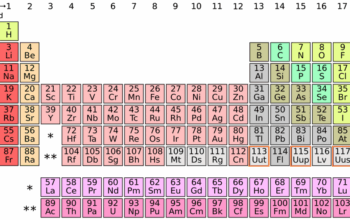The periodic table stands as one of the preeminent achievements of science, a systematic catalog of the elements that constitute the universe. Among these is the enigmatic element 118, known as oganesson (Og). Its very existence has captured the imaginations of chemists and physicists alike, not merely for its novelty as a superheavy element, but for the implications it has on our understanding of the fundamental principles of matter and the limits of chemical bonding.
First synthesized in 2002 by a team of Russian and American scientists, oganesson is a synthetic element, created in a laboratory rather than extracted from natural sources. This element is particularly curious due to its extreme atomic mass and the fleeting existence it possesses. Its stability is a topic of significant interest; having a half-life measured in milliseconds, oganesson eludes prolonged chemical study, confounding researchers with its transitory nature.
Oganesson’s fleeting existence triggers a plethora of questions about the fabric of atomic interactions and the overarching structure of the periodic table. The common assertion that elements become increasingly unstable as they approach the end of the table is evident in the behavior of oganesson. Superheavy elements, particularly those beyond element 103 (lawrencium), display increasingly bizarre physical and chemical properties that diverge from those predicted by our existing models. This observation illustrates a compelling intersection of quantum mechanics and chemistry, as the governance of atomic behavior transforms under the influence of overwhelming nuclear forces.
What makes oganesson so provocative is not merely its short half-life but the stark absence of the attributes that typically characterize noble gases. It was anticipated that oganesson would mirror the chemically inert nature of its lighter relatives, such as neon or argon. However, early findings suggest that oganesson may exhibit unexpected reactivity, a departure from the noble gas classification. This peculiarity challenges the quintessential notion of valence shell stability that has long guided our comprehension of chemical bonding.
The discrepancy between expected and observed behavior beckons the inquiry into relativistic effects, which become pronounced in superheavy elements. As atomic numbers climb, the speed of electrons approaches relativistic velocities, thereby influencing their mass and the forces at play within the atom. The electron cloud surrounding the nucleus experiences contraction, resulting in distinctive alterations to chemical properties. In this light, oganesson emerges as a vivid embodiment of the intricate intertwining between relativity and quantum mechanics, underscoring the limitations of existing theories.
Moreover, the pursuit of oganesson raises profound questions about the boundaries of the periodic table itself. The quest for new elements has persisted throughout history, yet each successive discovery reveals a different facet of atomic theory and nuclear physics. As we venture deeper into the realm of superheavy elements, we grapple with the idea of an “island of stability,” where certain isotopes may manifest greater longevity despite their elevated atomic numbers. Oganesson delineates the farthest reaches of this theoretical island, teasing scientists with its tantalizing potential.
Cultural fascination with oganesson also hints at deeper philosophical themes surrounding scientific discovery. The transient nature of this element symbolizes humanity’s ephemeral grasp on understanding the universe. Much like ancient alchemists who sought to transform base metals into gold, modern scientists embark on a quest for stability and permanence in the unpredictable world of superheavy physics. This pursuit underscores an intrinsic aspect of scientific endeavor; the journey is often as significant as the destination. The ephemeral nature of oganesson serves as a metaphor for the very essence of scientific inquiry: the act of probing the unknown, irrespective of the outcome.
Oganesson’s introduction to the periodic table compels us to reconsider not only the elemental taxonomy but also the very nature of atomic interactions. It encourages a quitessential re-evaluation of the fundamental assumptions underpinning chemical behavior, particularly regarding how the periodic table might expand into further undiscovered territories. The trajectory of element discovery will invariably continue to challenge and redefine our existing paradigms, beckoning future generations to question the limits of the scientific frontier.
The synthesis and study of oganesson highlight the interplay between theoretical predictions and experimental verification. While established theories may guide expectations, the unpredictable manifestations of superheavy elements illuminate the gaps in our understanding. Such discrepancies foster a spirit of inquiry, ultimately propelling scientific advancement. As we refine our methodologies and delve deeper into the complexities of nuclear physics, we edge closer to decoding the enigmatic dance of atomic particles that govern our material world.
In conclusion, the case of element 118, oganesson, encapsulates our perennial quest for knowledge and understanding. It encapsulates not only the scientific endeavor to uncover the mysteries of the atomic realm but also the philosophical reflections on the nature of existence and the relentless pursuit of discovery. As oganesson exemplifies, the strange and the transient often lead us to the most profound insights, urging us to explore further into the atom’s heart—a realm where certainty remains elusive, yet the journey is infinitely rewarding.












